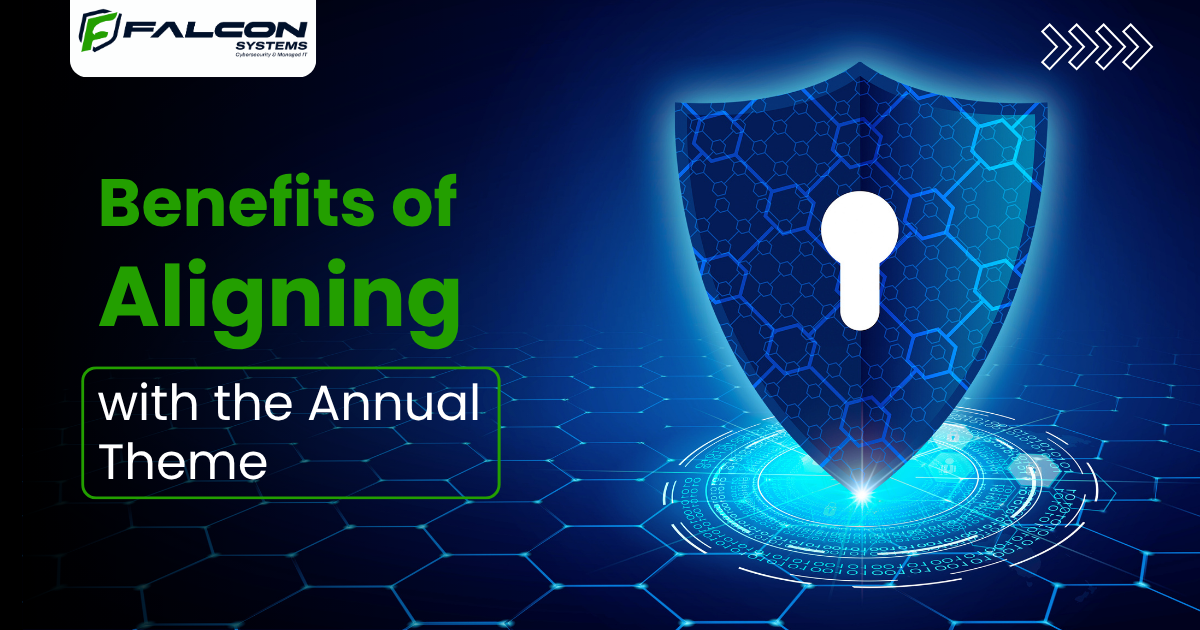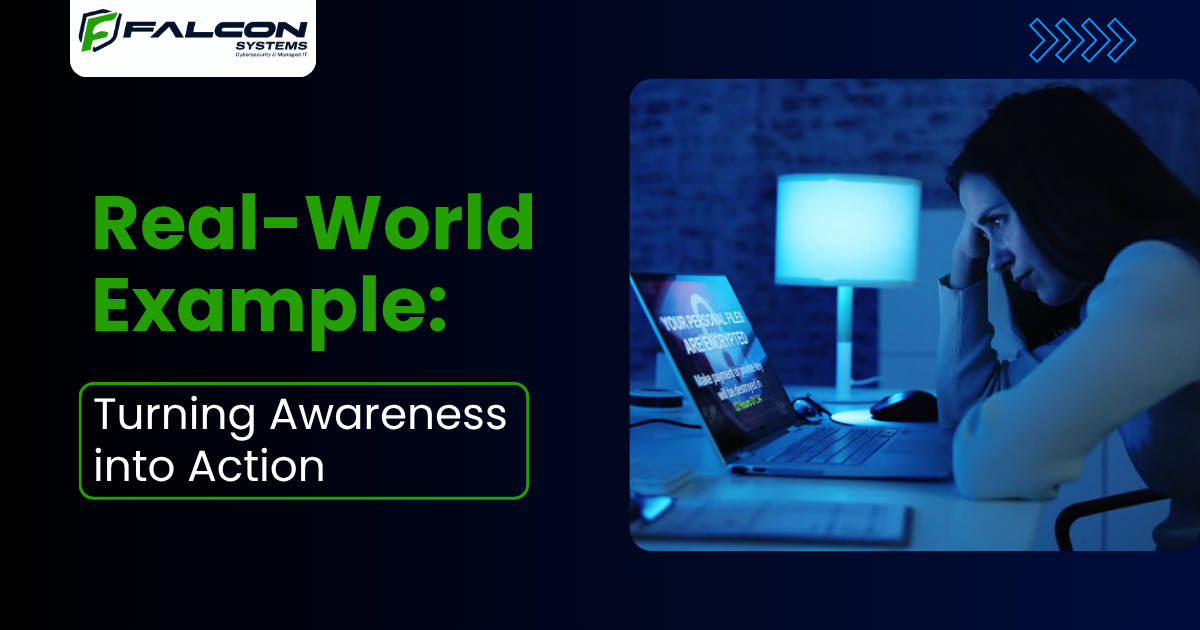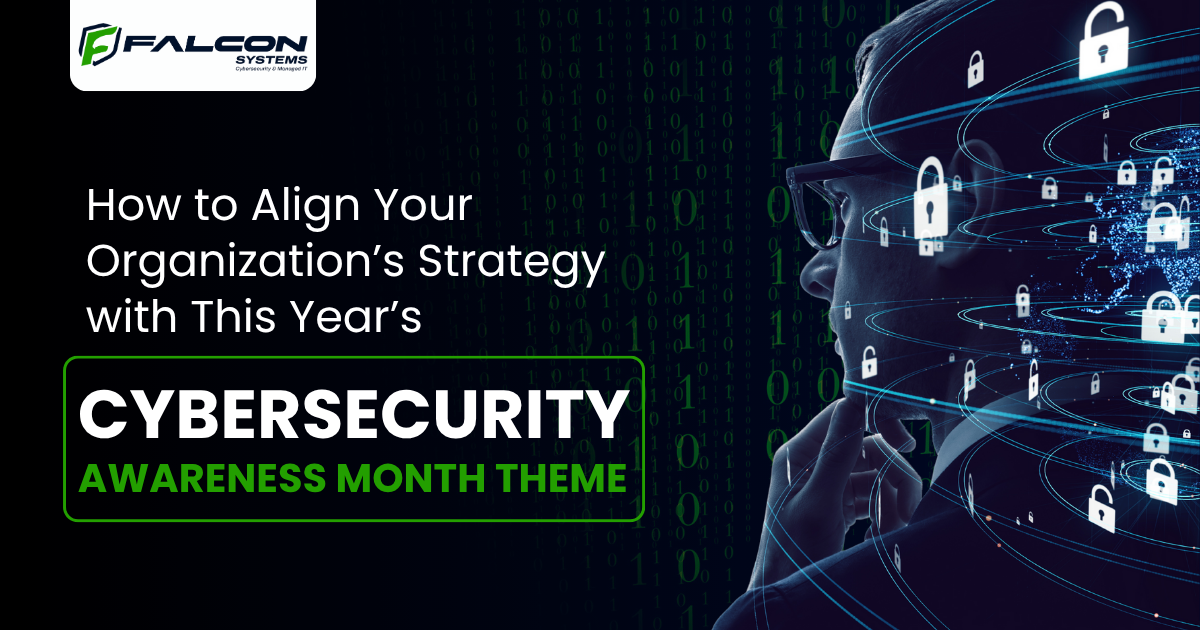Cybersecurity threats continue to grow across industries. Each year, Cybersecurity Awareness Month themes remind organizations to pause and evaluate their strategies. These yearly campaigns help teams focus on new risks, improve digital safety habits, and strengthen overall security awareness.
Aligning your company’s goals with this year’s theme not only protects your systems but also creates a culture of accountability and awareness. It ensures that every department, from management to staff, understands its role in maintaining cybersecurity standards. In this blog, you will learn how your organization can align strategies with the annual theme and turn awareness into action.
Why Cybersecurity Awareness Month Themes Matter
Each October, Cybersecurity Awareness Month serves as a reminder that security is everyone’s responsibility. Government agencies, businesses, and schools use these campaigns to promote online safety practices and share valuable resources. The themes for Cybersecurity Awareness Month vary yearly, but the purpose stays the same: to build strong habits that reduce risks.
These themes guide businesses in creating programs that educate and engage employees. When organizations follow the theme, they unify their security goals with a national focus. This approach builds trust among staff and customers, proving that the company prioritizes data protection.
Step 1: Understand the Current Theme
Before planning, it’s essential to know what this year’s focus is. The National Cybersecurity Alliance and CISA usually announce it months in advance. The theme often targets real issues like password security, phishing prevention, or safe device management. Start by reviewing official materials from trusted cybersecurity sources.
Identify the main message behind the theme. Then, relate that message to your organization’s security goals. For example, if the theme centers on multi-factor authentication, evaluate whether your systems encourage or require its use. This step connects external awareness campaigns with internal improvements.
Step 2: Audit Your Current Cybersecurity Practices
Once you understand the annual theme, examine how well your organization’s policies align. Begin with a security audit. Review system access, device management, data storage, and employee awareness. Document areas that need updates or new safeguards.
A clear audit helps you see where your organization stands compared to the message behind the themes for Cybersecurity Awareness Month. If your company already runs training programs, assess their effectiveness. Ask employees for feedback. Their experience can reveal gaps in understanding or communication.
Step 3: Build a Strategy Around Employee Involvement
Employees are the first line of defense against cyber risks. A successful plan for Cyber Awareness Month ideas should focus on participation rather than only compliance. Create engaging sessions that show real-world examples of threats, such as phishing emails or unsafe password sharing. Use quizzes, group discussions, or short video sessions to keep learning interactive.
Reward departments or individuals who actively participate. Recognition motivates people to take cybersecurity more seriously. Even simple contests, like spotting suspicious emails, can make learning enjoyable and memorable. When workers feel part of the solution, they are more likely to report risks early and follow policies responsibly.
Step 4: Connect Leadership with the Annual Theme
Cybersecurity success depends on leadership support. Executives must communicate the value of awareness initiatives to the entire organization. When leaders openly discuss risks and share the annual cybersecurity theme, employees pay attention.
Encourage leadership teams to participate in awareness events, sign company-wide pledges, or host short safety talks. Visible support from management signals that cybersecurity is not just an IT concern; it’s a shared responsibility. Including leadership in awareness activities also helps secure funding for better systems, tools, and training. It sets an example for others to follow.
Step 5: Update Training Programs with Relevant Topics
Every organization needs ongoing education. The cybersecurity education topics you choose should connect directly to the year’s theme. For instance, if the focus is on “Secure Our World,” tailor your sessions around personal and workplace safety. Include lessons on strong password practices, multi-factor authentication, and secure browsing.
Keep training short but consistent. It’s better to have monthly 15-minute sessions than one long seminar that employees forget. Use simple visuals or examples from recent cyber incidents. People remember stories better than technical details. The goal is to make cybersecurity understandable for all skill levels.
Step 6: Improve Communication Across Teams
Awareness works best when communication is clear and regular. Use newsletters, chat platforms, or posters around the office to reinforce key messages. Highlight facts from the Cybersecurity Awareness Month themes to remind employees what’s at stake. A weekly “Cyber Tip Tuesday” or short internal post can go a long way.
Repetition builds memory. The more often your team sees these reminders, the more likely they are to form good habits. Consider assigning cybersecurity champions within departments. These individuals can help relay updates, answer questions, and encourage peers to participate in awareness activities.
Step 7: Create Engaging Cyber Awareness Month Ideas
Creative campaigns help people pay attention. Simple ideas like themed days, awareness badges, or short quizzes can make learning fun. For example, host a “Secure Password Challenge” where employees test the strength of their passwords.
You can also organize small group sessions to discuss recent scams or breaches. Encourage employees to share how they protect personal accounts at home. This builds a stronger personal connection to cybersecurity. Cyber awareness month ideas that blend education and entertainment often have the best results. When people enjoy participating, they remember what they learn.
Step 8: Use Real Metrics to Track Progress
Tracking your progress ensures accountability. After awareness month ends, measure how many employees completed training or passed quizzes. Compare participation rates to previous years. Check whether the annual cybersecurity theme improved your internal security posture.
For instance, did more users enable two-factor authentication? Did phishing reports increase due to better awareness? Collecting this data helps leadership see the real value of awareness initiatives. It also provides direction for future improvements.
Step 9: Keep Awareness Going Beyond October
Cybersecurity shouldn’t stop after one month. Extend the campaign into year-round efforts. Use the cybersecurity education topics introduced during awareness month as part of your ongoing safety culture.
Hold refresher sessions every quarter. Update your internal communication channels with new content. Encourage employees to report suspicious activity anytime, not just during October. Continuing awareness throughout the year helps your organization stay alert and resilient against threats.
Step 10: Partner with Trusted Cybersecurity Experts
Working with professional cybersecurity service providers strengthens your defenses. A trusted partner like Falcon Systems can help design tailored strategies that align with the latest awareness themes.
Experts can assess your current systems, close security gaps, and build training programs that match your team’s needs. Their insights make it easier to connect awareness campaigns with real business protection. If you lack in-house expertise, collaboration ensures your efforts stay aligned with national standards and best practices.
Benefits of Aligning with the Annual Theme

Following the Cybersecurity Awareness Month themes benefits every organization, regardless of size. Here’s what you gain by staying aligned:
- Improved security culture: Employees become more alert and proactive.
- Reduced risk of breaches: Consistent training helps prevent common attacks.
- Stronger trust: Clients and partners value businesses that prioritize data safety.
- Compliance support: Awareness helps meet industry regulations.
- Long-term savings: Preventing incidents is always cheaper than repairing damage.
The benefits extend beyond October—they create lasting safety habits across the organization.
Real-World Example: Turning Awareness into Action

Consider a mid-sized company that decided to align its strategy with the yearly theme focusing on “Secure Our World.” The IT department introduced new multi-factor authentication tools. HR launched interactive security quizzes.
Within three months, 90% of employees had improved their password strength, and phishing click rates dropped by 40%. This example shows that consistent awareness efforts deliver measurable results. When organizations turn themes into action, they build both knowledge and trust among teams.
Conclusion
Cybersecurity awareness is not just an event; it’s a habit that must be nurtured. Aligning your strategy with Cybersecurity Awareness Month themes helps strengthen your defenses and build a responsible culture across your organization. By engaging employees, updating training programs, and connecting leadership with the theme, you can create a lasting impact. Each step brings your business closer to a safer, more resilient future.
To get expert help in aligning your cybersecurity efforts with this year’s awareness theme, visit Falcon Systems today. Strengthen your defense. Secure your world.
Frequently Asked Questions
- Why should organizations align with Cybersecurity Awareness Month themes?
It ensures all departments share the same focus on safety and awareness, making company-wide protection stronger. - What are some creative Cyber Awareness Month ideas?
Activities like password challenges, quizzes, and themed workshops make cybersecurity learning fun and effective. - How often should companies review annual cybersecurity themes?
Every year. Each theme reflects current threats and helps organizations stay updated on best practices. - Which cybersecurity education topics work best for teams?
Topics like phishing prevention, password safety, and secure browsing help employees understand practical ways to stay safe. - How can Falcon Systems help with cybersecurity awareness?
Falcon Systems provides strategic consulting, training, and advanced protection tools that align with awareness month goals.

